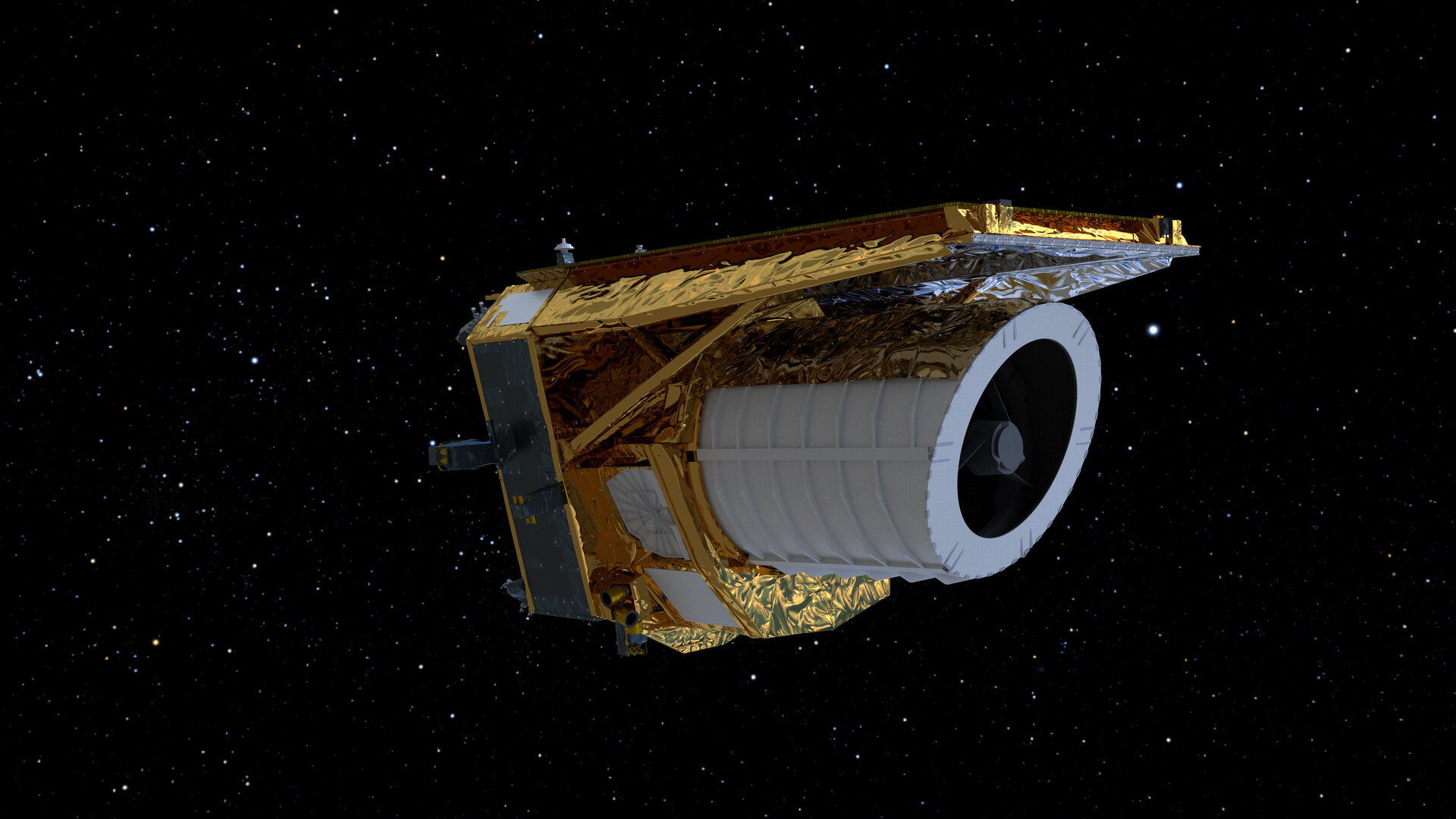
13/07/2023 3411 views 145 likes
Follow Euclid on its journey to Lagrange point L2 and find out how mission controllers at ESOC in Darmstadt are proceeding with turning on, checking and calibrating the spacecraft’s equipment, the telescope and scientific instruments, as they prepare for routine science observations.
11 – 12 July. Wake up VIS
VIS control electronics were switched on (primary and redundant branches) and the operations team received ‘synthetic’ data from the instrument confirming its correct functioning.
Additionally, the spacecraft’s micro-propulsion system was activated for the first time and successfully tested. This system is made up of six redundant cold gas micro-propulsion thrusters which are fundamental to making sure Euclid can achieve very precise and stable pointing, and deliver images of the highest quality.
9 July. Release of high-gain antenna
The Euclid operation team sent the command to release the K-band high-gain antenna, part of the spacecraft’s deep-space communications system. This antenna will be used to send more than 100 GB of compressed data down from the spacecraft to a large antenna in ESA’s deep-space communication network Estrack, daily.
Euclid is now the biggest transmitter of data (in terms of data rate of about 74 Mbps) from trans-lunar space. This is around 2–3 times the rates used by the James Webb Space Telescope which held the trophy so far.
With this critical operation successfully executed, Euclid is getting ready to open its eyes by switching on the focal-plane detectors of the two scientific instruments.
6 July. Wake up NISP
The wheel mechanisms inside the NISP instrument were activated for the first time. Engineers received telemetry from the spacecraft about the accurate positions of the wheels, and commanded them to rotate to the desired position.
The spacecraft remained slightly titled towards the Sun to allow some sunlight to enter the telescope tube without illuminating directly its primary mirror (Solar Aspect Angle between 51–54 degrees). This procedure warms up the telescope interiors and ensure that any trace of ice evaporates away. Temperatures and electric-power levels are nominal.
The journey towards L2 continues. This figure shows the position of Euclid on 6 July. The diagram traces the trajectory of the spacecraft as seen from above the Ecliptic plane, that is the Earth-Sun plane.
4–8 July. De-icing for perfect vision
Euclid needed to remove any moisture that could freeze on its telescope mirrors, obscuring and distorting its otherwise pristine views of the distant cosmos. To do this, Euclid was tilted towards the Sun. As sunlight entered the telescope tube and the temperature rose, any residual trace of ice evaporated away. This orientation was maintained for several days, to allow enough time for the water vapour to escape into space.
3 July. Execution of critical orbit manoeuvre
Launch and Early Operations Phase (LEOP) operations progressed nominally during the second day after launch. The main events were the execution of the first time-critical orbit control manoeuvre, reaction wheel tests and completion of remaining LEOP activities before the transition to commissioning operations.
2 July. On the way to L2
Commands have been sent to Euclid to execute a manoeuvre that successfully altered the spacecraft's trajectory by about 2.14 m/s and put it on course to join Gaia and Webb around Sun-Earth Lagrange point 2.
"follow" - Google News
July 14, 2023 at 01:27AM
https://ift.tt/LPZDOi4
ESA - Follow Euclid's first months in space - European Space Agency
"follow" - Google News
https://ift.tt/nJF0yfW
https://ift.tt/TGmrKHt
Bagikan Berita Ini















0 Response to "ESA - Follow Euclid's first months in space - European Space Agency"
Post a Comment